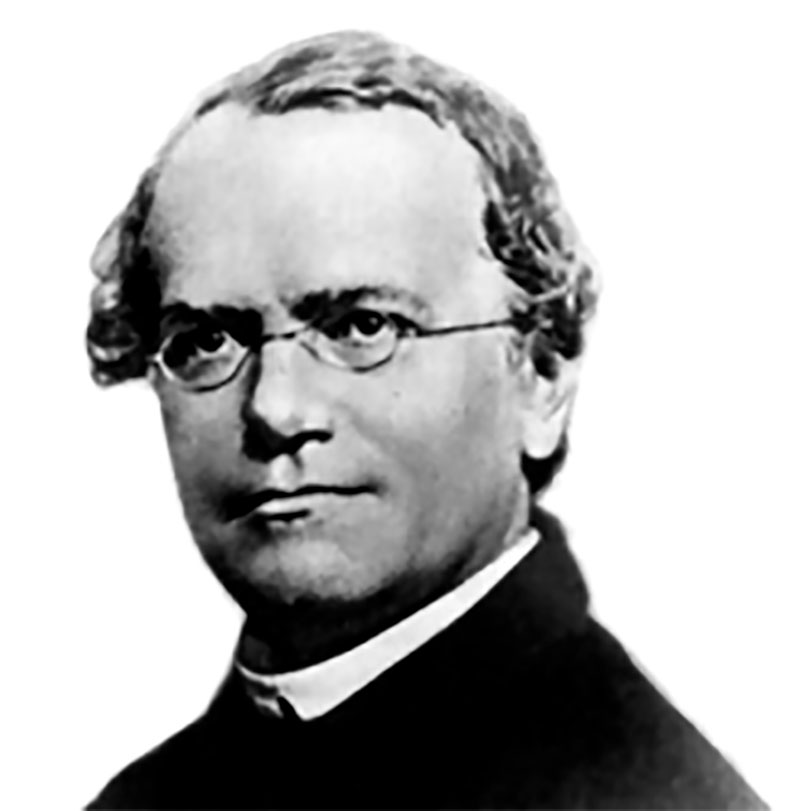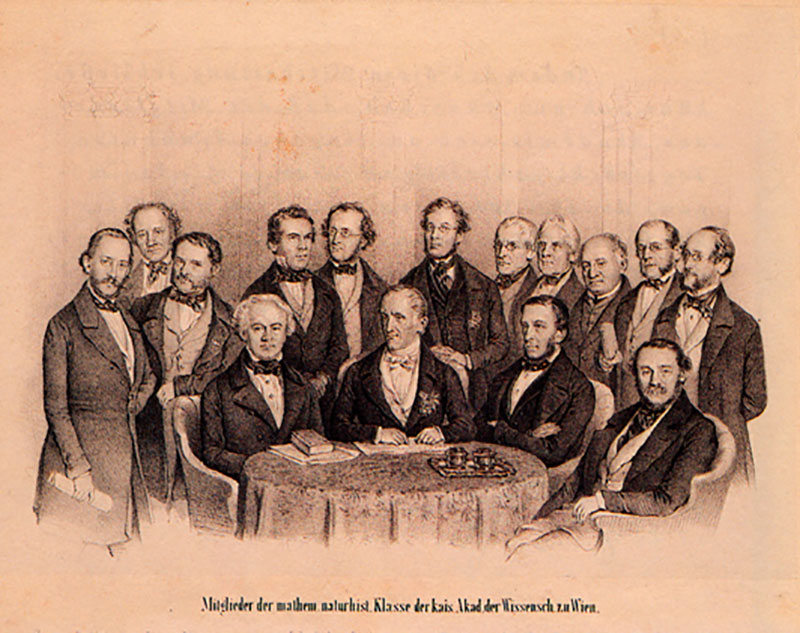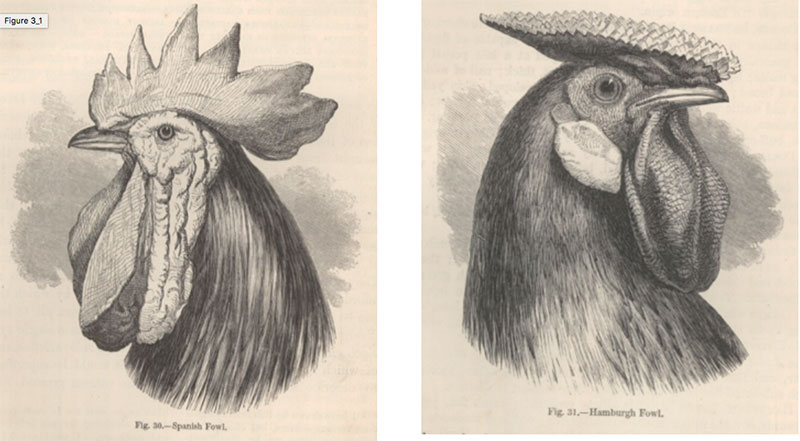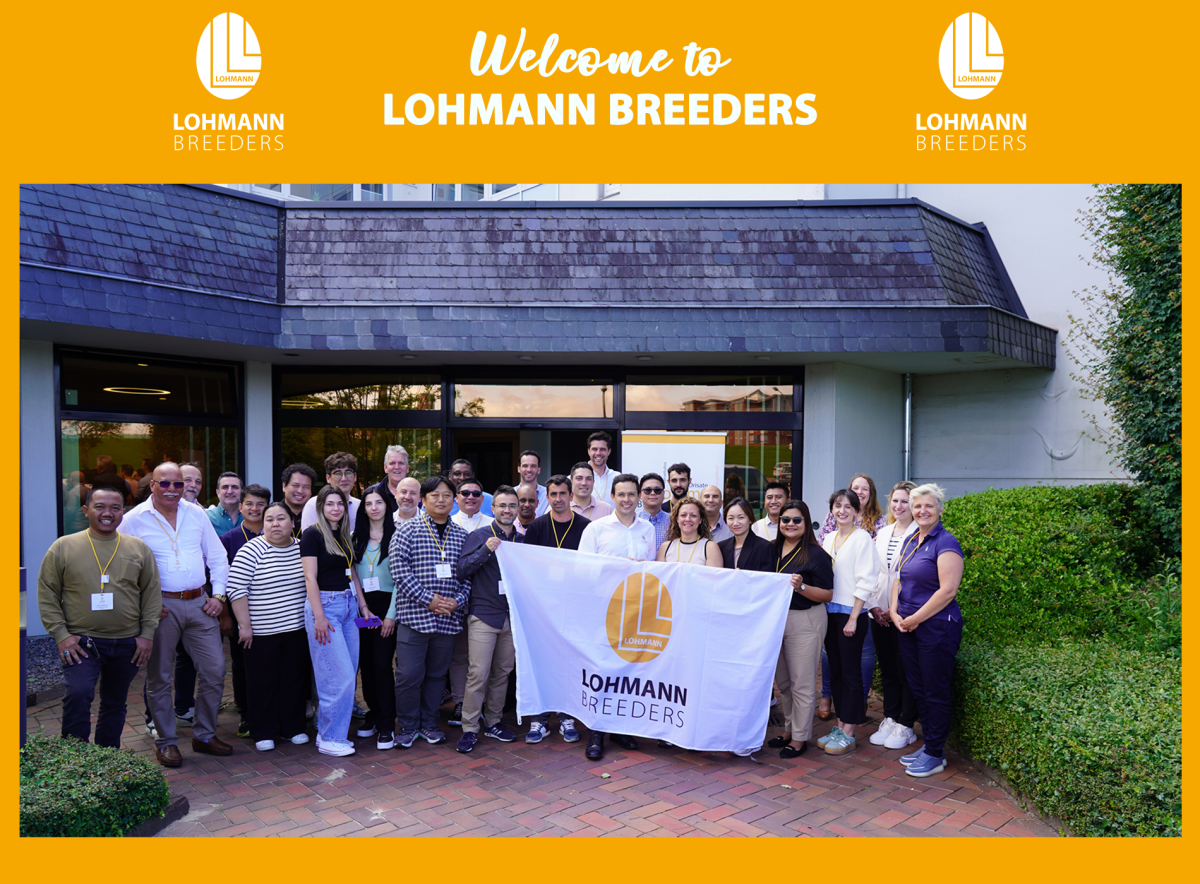Preface
The present article is based on the introductory lecture of the author “150 Jahre Mendel’sche Regeln: vom Erbsenzählen zum Gen-Editieren” at the joint Symposium of the Austrian Academy of Sciences and the Gregor-Mendel-Society, held in Vienna March 2016. The article focuses on the scientific work of Mendel, with special reference to the social and scientific conditions of his time.
Abstract
Genetics and genomics have shown unexpected progress in the last decades. Their impact has spread from the traditional fields of interest, breeding of plants and animals, towards all fields of life sciences, medical diagnostics and remedies, food and feed technology, fuel production, etc. The 150th anniversary of the publication of “Mendel’s laws” is an opportunity to recall the historic framework of the epoch-making findings on the nature of inheritance. The career of Mendel started under highly unfavorable conditions. Born as son of a poor farmer, he had to enroll as cleric to receive higher education. His famous crossbreeding experiments were carried out during his spare time after all routine obligations as teacher, monk and finally as abbot of his monastery. Based on observations and statistical analysis of large scale breeding experiments, Mendel developed the theory of inheritance including dominant and recessive effects. His theory was not unanimously accepted by contemporary scientists, but Mendel showed no ambition to defend it in public. He was convinced that his work would be recognized in due time when he said “meine Zeit wird kommen – my time will come”. The validity of Mendel’s theory was indeed confirmed by experiments of de Vries, Correns and the brothers Tschermak-Seysenegg about 30 years later. Again one generation later, geneticists discovered that Mendel’s laws not only explained qualitative genetic (i.e. single gene) effects but represent the basis for quantitative genetics. To appreciate Mendel’s scientific merits, we should remember the unfavorable working conditions of those times. Not only was he lacking technical support, even more problems arose from the adverse attitude of the church towards new insight in science. It is interesting to note that important scientific inventions have been made by other scientists with a clerical background (Galilei, Copernicus, Keppler, Lamarck and Darwin) despite the conservative spirit of the Christian church. Mendel owed his successful work not only to his excellent education, but also his particular character, which combined hard and meticulous scientific work with virtues of the Christian and the antique philosophy.
Keywords
Genetics, Mendel’s law, history
Education and first experience
Johann Mendel was born on 20 July 1822 as son of a poor farmer in the small village Heinzendorf, Silesia (today: Vracne, Poland). He was noticed as an intelligent school boy with outstanding results. Since his family was not in a position to pay for higher education, his school mentor proposed that Johann should study theology and become a monk in an Augustinian monastery. In this case the convent of the monastery would pay for his study. Following this recommendation, Mendel enrolled in the Augustinian St Thomas Abbey in Brünn, Austria-Hungary (today: Brno in the Czech Republic) in 1840 and adopted the clerical name Gregor.In this monastery Gregor came into contact with animal and plant breeding activities. The monastery belonged to the “Hermits of St. Augustinus”, a mendicant order. Abdication of property was a fundamental principle of this order. This life style differed from the capitulars, which reside in the monastery Kloster Neuburg near Vienna, and are considered the wealthy part of the order St. Augustinus. The founder of the order was St. Augustin of Hippo, an antique city in Northern Africa. He lived from 354 until 430 and was one of the “fathers of the church” in the late antique and the early mediaeval time. He was an important philosopher with substantial influence on the thinking of the Christian world in those days. The long list of well-known members of the Augustinian hermits includes two with outstanding influence: Martin Luther, the reformer of the Christian church in the 16th century and translator of the Bible into German, and Gregor Mendel as the mentor of modern genetics.
Four years after his enrolment in the monastery St. Thomas, Gregor Mendel was ordained priest and acted as teacher. His abbot, Franz Cyril Napp, recognized the scientific quality of Gregor Mendel and sent him to Vienna for further studies. Here he met famous professors, like Doppler (mathematics and physics), Redtenbach (chemistry), Eduard Fenzl and Franz Unger (botany), von Ettinghausen and von Baumgartner (physics). All of them were members of the Imperial Academy of Sciences of Vienna (Figure 2). Gregor Mendel was particularly influenced by the professors in physics, Doppler and Ettinghausen, and the professor in botany, Franz Unger. From Franz Unger he learned methods of crossbreeding and combination, which allowed recognizing relationships between groups. For this reason, Mendel meticulously recorded and analysed the results of his crossbreeding experiments.
In 1856 Gregor Mendel failed in an exam which was required for the nomination as teacher. It has been speculated that his failure was caused by a dispute within the Academy of Science: The botanist Eduard Fenzl denied the theory of his colleague Franz Unger, that fertilization is the result of melting of male and female cells. Mendel, in contrast, supported the theory of the combination of male and female cells. Unfortunately Mendel was not examined by Franz Unger, but by his adverse colleague Fenzl, and this was probably the reason of his failure to obtain the intended academic title. Possibly it was this failure which stimulated his scientific ambition. Back to Brünn, he started the famous experiments with peas in the garden of the monastery.

Figure 1: Gregor Mendel |
Source: © Unknown / wikimedia.org / CC0

Figure 2: Members of the Academy of Sciences of Vienna and teachers of Gregor Mendel
Experimental work and deduction of genetic rules
Using specialized techniques of artificial fertilization, Mendel produced about 15,000 controlled crosses of different varieties of peas. He carefully followed the development of the hybrids and their offspring using statistical methods. On the basis of the phenotypic distribution of the crosses he developed the so-called rules and pattern of inheritance, though the expression “inherited” appeared only once in his publications. Mendel found that criteria or properties of parents are transferred unchanged and in constant frequencies to offspring as inherited characteristics. He further concluded that each individual has two complete sets of heritable factors, one from each parent, and that the contribution of each set was independent from the sex of the parent. The heritable factors may not be expressed in all cases. Criteria which appeared in the hybrids he called “dominant” characteristics and those which became latent, he called “recessive” characteristics. He chose the expression “recessive”, e.g. not appearing, because these criteria reappeared again in unchanged pattern in offspring of the hybrids. On 8 February and 8 March 1865, Mendel reported his crossbreeding experiments in two sessions of the Association of Natural Sciences in Brünn. One year later, in 1866, his reports were published in Volume 4 of the “Verhandlungen des Naturforschenden Vereins”, a leading journal of natural sciences at the time. The so-called laws of Mendel led to a revolution not only in biology and agricultural sciences, but also in various other disciplines.Mendel’s rules explained qualitative gene effects which are based on single (major) genes. Methods to identify Mendelian effects cannot be applied in quantitative genetic traits. The next important milestone in genetics was the transition from Mendel’s qualitative genetics towards quantitative genetics around the year 1920. Fisher (1918) and Wright (1921) showed that quantitative genetic effects are the result of simultaneous segregation of genes on multiple locations. Hence quantitative genetics represents an extension of Mendel´s rules, not a contrast.
Today, 150 years after Gregor Mendel, molecular genetics plays a dominant role in natural sciences. These new methods influence not only biology and agricultural sciences. High precision diagnostic tools are indispensable for treatment of human and animal diseases and the development of new medical drugs. The development and use of gene editing to replace single base nucleotides in live organisms needs to be carefully observed and evaluated by scientists and the society to ensure that they will be used to improve the health of the human population.
Gregor Mendel was elected abbot of his monastery in 1868. This means he was charged with all obligations of the Augustinian order. Nevertheless, he devoted his spare time to scientific activities, mainly to scientific questions in agriculture, meteorology and forestry. He died on 6 January 1884. His scientific work was not recognized and honored at that time. The quote “my time will come” goes back to the time when he acted as abbot of his monastery. Continuing progress of genetics confirms the importance of his findings and shows that his prediction became true.
The role of clerical scientists in advancement of science
It took about 30 years until Mendel’s laws were recognized. Nobody knows for sure whether this delay was due to the fact that Mendel was a monk and not member of a renowned scientific institute. In contrast to the present time, when religion and natural sciences appear to be incompatible and far from each other, many important scientists in the past were clerics or had an education in a religious institution. Important universities in Europe were founded by churches. The universities in central Europe emerged from the mediaeval Christian education system which has been established by monasteries and domes in the 6th century. Priests, monks and nuns have discovered and invented a large number of important innovations. The official Christian church, however, was not always pleased with some of these innovators, who had to suffer for their creativity. The best known story of a monk’s discovery is that the Franciscan monk Berthold Schwarz from Freiburg, Germany, invented the “black” gun powder, which was named “Schwarzpulver” after him. Priests and clergymen worked on many topics outside their proper destination: electricity, magnetism, perception of colors, optics, telecommunication, production of paper from wood. Even more recently, clerics developed slow motion movies and the first serial production of washing machines. Health care was a prominent activity of monasteries, and medicine during the mediaeval time in central Europe was mainly in the hands of monks and nuns. Hospitals were operated by monasteries in the early medieval time, and there were virtually no physicians outside the monasteries. Nurses and barber-surgeons were the only “authorities” to transfer accumulated experience from one generation to the next. The monastery’s medicine was predominantly based on naturopathy, hydropathy and phytotherapy, using water and medicinal herbs as remedies. The naturopathy has a long tradition in the western medicine, from the abbess Hildegard von Bingen in the 12th century (1098 – 1179) to the priest Sebastian Kneipp (1821 – 1897), who brought hydrotherapy to new blooming.Modern natural science based on mathematics started with Galileo Galilei (1564 – 1642). He was the first who used mathematics to study natural events. Galilei was educated in a monastery and intended to join the Benedictine order. His father, however, sent him for medical studies to Pisa, where his main interest changed from medicine to mathematics. With his telescope he confirmed the heliocentric picture of the universe of Nicolaus Copernicus (1473 – 1543). This was against the prevailing theory of the Christian church, which still believed in the Ptolemaic theory of the universe. Galilei was prosecuted by the inquisition, the powerful institution of the Christian church to fight heresy. Galilei’s tragedy was that he was still a strong believer in Christianity, but attempted to correct the erroneous perception of the universe. He was convinced that god’s creation could be explained completely through experiments and logical thinking. This was also against the church’s official point of view of that time that god’s work in nature could never be understood and explained by the limited mental capacity of human beings. Until the time of Galilei, the church was under the influence of the scholastic theology, which had been developed some centuries before by Albertus Magnus (1200 – 1280) and Thomas Aquinas (1225 – 1274). This theology was still based on natural philosophy and the logics of Aristotle. As founder of the “precritical sciences”, Galilei was still under the influence of the traditional theology when he began his studies, and he searched for the truth. The fundamental difference between science and religion is that sciencebased insight is subject to the principle of falsification. In his “Logic of Research”, the philosopher Karl Popper postulated that theories have to be subjected to experimental examination, e.g. the theory must be refutable. The principle of falsification of theories is the basis of progress in and success of natural sciences. This is in contrast to the religion-based approach, which tries to confirm an anticipated theory.
The above-mentioned Nicolaus Copernicus, who studied theology in Krakov (Poland), had no problems to believe in god and, at the same time, accepting that the sun and not the earth is the center of our universe. Similarly, Johannes Keppler (1571 – 1630), who studied theology, mathematics and astronomy at the University of Tübingen, Germany, could combine his faith in god with the fact that the planets move around the sun in elliptic orbits. In this context we should also remember Isaak Newton (1642 – 1726), one of the most prominent scientists of his time and founder of modern understanding of natural sciences, who was educated in a Christian institute, the Trinity College of Cambridge. Although Newton did not become a cleric as intended, he remained a strong believer in Christian theology. A few areas remained, where scientists could not overcome the gap between science and religion. This was also true for genetics and the theory of evolution.
Jean Baptiste Lamarck (1744 – 1829) attended the Jesuit College in Amiens, France, with the intention to become a cleric. Three decades before Charles Darwin he developed a theory of evolution. According to Lamarck’s theory, life had begun through spontaneous creation and then developed, under the influence of natural forces, goal-oriented from simple to more complex forms. He also thought that the use of organs would lead to functional modifications, which are transferred from one generation to the next. Organs which are not used would shrink. Lamarck’s assumption that life was not the result of god’s creation but develops under natural driving forces was appalling to the prevailing theology. His theory of inheritance of environmentally acquired characteristics was also criticized by contemporary scientists. Interestingly, Lamarck’s theory has been adopted by Lyssenko (1898 – 1976), the most influential geneticist in the Soviet Union and other socialist countries in the first half of the 20th century. Lyssenko was of the opinion that environmentally acquired traits of plants would be transferred to the next generation. Lyssenko’s theory was in contrast to the basic findings of Mendel, Darwin and contemporary geneticists. Hence, teaching their theories was prohibited in the Soviet Union up to 1960. Charles Darwin (1809 – 1882) began to study medicine. But he was not satisfied with this discipline and changed to theology – on the recommendation of his father, with the aim to become a cleric of the Church of England. He passed the exams with distinction and received the Baccalaureate in 1831. He did not continue the clerical career and focused his work on entomology, botany and geology. It is often overlooked that Darwin studied not only feral animal species, like the well-known finches of the Galapagos Islands, but also domestic animals. Darwin described in detail the variation and extreme phenotypes of domestic birds and mammals. The inheritance of some anatomic characteristics, such as the form of the chicken comb (figure 3), follows the Mendelian rules and is still being used to demonstrate the effect of qualitative genetics. Darwin had no understanding of genetics and could not explain how the variation of criteria could be passed from one generation to the next. The insight in these mechanisms became evident only when Mendel’s findings were considered.

Figure 3: The shape of chicken combs are based on qualitative genetics (Darwin, 1868)
Rediscovery of Mendel’s laws
Discoveries sometimes turn into tragedies when researchers realize that their findings have already been recognized and published by others before. Discoveries may also be made too early and ignored or even combated by the contemporaries. This was the case with Mendel’s rules of inheritance. Mendel’s findings were one generation ahead of the general development of natural sciences, and the society of his decades was not prepared to recognize his epochal discovery. One generation later, de Vries, Correns and the brothers Tschermak-Seysenegg found the same results as Gregor Mendel. Their publication in 1902 confirmed Mendel’s rules. Unfortunately the authors had to realize that they were not the first to uncover the principles of inheritance.Mendel and his ethical mind
Gregor Mendel was a solid, conscientious and ingenious natural scientist and not a visionary or a speculator. A visionary would have speculated on the potential results of his findings. All he wanted was to demonstrate existing natural rules as the result of creation. In this sense we understand his saying: “my time is still to come”, when he realized that the scientific community was not willing to recognize his findings. Mendel’s thinking was based on the Christian anthropology. He was deeply influenced by the Christian virtues: belief, love and hope. He was also aware of the virtues of the antique philosophy: wisdom, justness, courage, and modesty. He practiced this attitude in his function as monk and later as abbot. As reported by his colleagues, he was always kind and benevolent to everybody: “affabilis unicuique”. Mendel’s deep compassion with suffering humans is also expressed in a letter to his mother: ”There is little new in our monastery, except the enrolment of two novices, one from Brünn and one foreigner from Bavaria. …But not everywhere in the world it is as quiet and peaceful. There is an outbreak of war in Italy, bloodier than ever before. Thousends have lost their lives and any hour we expect news about a main battle which is foreseen in the last days of this month. May God give a fortunate end for our side. The screams sent to heaven by thousands of mothers whose sons are sacrificed, should be heard by god”. Mendel’s letter is dated Brünn, 25th June 1859. The main battle he mentioned had already happened the day before. It was the battle of Solferino, Italy, where Austria lost the Kingdom of Sardenia-Piemont in the “Sardinian War” against Napoleon. The small city of Castiglione had to accommodate 8000 victims of the war. They were looked after by Henry Dunant and the women of the city under the motto “Tutti fratelli” (we are all brothers). The impression of these events was the driving force of the foundation of the International Committee of the Red Cross in Geneva, Switzerland, in the following years.
Further reading
Darwin1868. The variation of animals and plants under domestication. London: John Murray. 1st ed., 1st issue.Hossfeld U. (2017) Die „Wiederentdeckung“ der Mendelschen Gesetze im Kontext neuer Forschungen (The “re-invention” of Mendel`s laws in the context of recent research), Nova Acta Leopoldina NF Nr. 414, im Druck.







